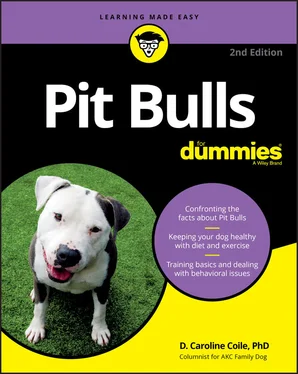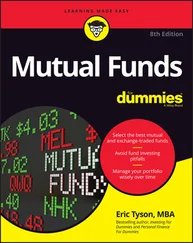 Explaining the Pit Bull’s origins
Explaining the Pit Bull’s origins
 Creating a distinct breed
Creating a distinct breed
 Going mainstream
Going mainstream
 Being labeled unfairly
Being labeled unfairly
 Growing in numbers
Growing in numbers
 Facing the facts
Facing the facts
Perhaps no other dog breed has endured as many public misconceptions as has the Pit Bull. These misconceptions truly run the gamut: Although some people consider Pit Bulls to be the safest and gentlest companions, others regard them as evil enough to be Satan’s understudies. Neither viewpoint is correct, but both have some basis in fact — and in the breed’s controversial roots.
Creating Canine Gladiators
Dogs and humans around the world have long shared a special relationship — a relationship originally based on function. Early dogs who proved least useful — or who were too wild, skittish, or dumb — probably ended up in the cave man’s pot, but the most helpful dogs (who were good at sounding alarms at intruders or at chasing down game) lived to produce others like them. Eventually, breed forerunners were created by breeding the best guards to the best guards and the best hunters to the best hunters. Of these, some strains proved to be especially brave and tough — valuable traits in a rough world.
Of course, these strains weren’t really breeds. Few cave men had American Kennel Club or United Kennel Club papers for their dogs, so pure breeding wasn’t terribly important to them. Still, with time the strains of dogs became more and more specialized. By classical Greek times, large fierce dogs called Molossians were so valued that Phoenician traders used them as bartering items. Because of this practice, the Molossian type was distributed along Phoenician shipping routes, some of which included stops in ancient Britain. The Molossians who ended up in Britain became further specialized and gave rise to the Mastiff family of dogs.
In Britain, Mastiffs were perfected as war dogs. When the Romans invaded Britain, they were so impressed by the Mastiff’s warring ability that they brought some back to Rome. Romans valued entertainment, and the courageous dogs became infamous as gladiators who fought humans, bears, lions, bulls, and even each other in Rome’s great Coliseum.
Rome was not, however, the only civilization to revel in blood sports. The British, too, placed high value on contests that featured animals fighting to the death. The spectacle of a dog killing a bull was the highest entertainment that most small villages could offer its poor inhabitants. But this kind of entertainment spanned all classes: By the 16th century, bull-, bear-, and even horse-baiting provided the finale for a royal evening of entertainment (for an explanation of bull-baiting, see the sidebar “Bull-baiting”). In the 17th century, the King even appointed a Master of the King’s Games of Bears, Bulls, and Dogs.
The dogs’ owners won prizes for their animals’ spectacular performances, and the progeny of famous or particularly game dogs (meaning those dogs who refuse to quit the task at hand despite overwhelming adversity) were sought after and capable of bringing high prices. As distasteful as it sounds, these dogs produced the never-say-die stock from which today’s Pit Bull claims her heritage.
An end to legal blood sports in England finally came about in 1835, but that only pushed the fans and gamblers to conduct covert matches. Staging a clandestine bull-baiting would have been difficult, but scheduling a dogfight in a barn, cellar, or back room without being discovered was quite simple.
Dog fighting favored a slightly smaller, more agile gladiator than the dogs who were adept at baiting larger animals. Most historians believe that the stocky bull-baiting dogs were crossed with the swift and agile terriers of the time to produce the aptly named Bull and Terrier, a relatively small, smart, agile, tough, and strong game dog the likes of which had never been seen before. Other breed historians contend that no such cross was made and point out that the Bulldog of the time, the Bullenbeisser, was, in fact, so similar to the modern Pit Bull that it was simply a matter of selecting the most successful fighters. Whatever the recipe, it worked.
Although the role of canine gladiator was the most visible job for the tough dogs of ancient Europe, it was far from their most important one. A subtype of Molossian dogs known as Bullenbeissers , or German Bulldogs, were valued for their ability to control unruly cattle, earning their keep as butcher’s dogs. These dogs had to catch and grip escaping or uncooperative bulls on their way to market. The dog would hang on the bull’s nose, gripping the nose without letting go until the butcher could regain control. A good butcher’s dog could make the butcher’s job easy; a bad dog could be killed by the bull. As with all people who depend on their dogs, butchers were proud of their best “bulldogs” and anxious to prove them better than the neighboring town butcher’s dogs. So began the cruel practice of bull-baiting, in which a bull was tormented (sometimes for hours) not only for entertainment, but also in the mistaken belief that torturing the animal before killing it made its meat more tender. In fact, in some places selling meat from a bull that had not been baited was illegal. Bullenbeissers gave rise to the Boxer breed in Germany and to what would eventually become the Pit Bull in Britain.
Almost every town in England had a bull-baiting ring. One or two dogs were released, and they would attempt to grab the bull (which was usually chained to a stake) by the nose, often tormenting it for hours. The cruelties inflicted upon the poor animals (bulls and dogs alike) by people in the process were atrocious. In one well-known case, the owner of a dog demonstrated how courageous his dog was by cutting off each of her legs, one leg at a time, while she continued to drag herself to attack the bull. The dog was lost, but her offspring were in high demand.
As the Bulldogs or Bull and Terriers became known less for their bull-baiting skills and more for their fighting skills in the pits, they came to be known as Pit Bulldogs, or more simply, Pit Bulls.
 The breed known today as the Bulldog or English Bulldog is not the same as the Bulldog of the eighteenth and nineteenth centuries. The earlier Bulldog strain is the ancestor of both the modern Pit Bull breeds and the modern Bulldog, but it was more similar to today’s Pit Bull than to today’s Bulldog. Many people still incorrectly refer to Pit Bulls as “Bulldogs,” though.
The breed known today as the Bulldog or English Bulldog is not the same as the Bulldog of the eighteenth and nineteenth centuries. The earlier Bulldog strain is the ancestor of both the modern Pit Bull breeds and the modern Bulldog, but it was more similar to today’s Pit Bull than to today’s Bulldog. Many people still incorrectly refer to Pit Bulls as “Bulldogs,” though.
When English immigrants came to America, they brought with them their sport and their dogs. By the mid-1800s, dog fighting had a solid following in America. With the migration west, Bulldogs once again found themselves called upon to do the toughest jobs. They served as all-purpose farm and guard dogs, protecting families and stock from fierce wildlife, rampaging cattle, and marauding vermin. Many also served as hunting dogs, holding their own against bears, wolves, and on occasion, buffalo. Once again, the Bulldog underwent a metamorphosis — this time into a larger dog that could best serve these vital functions.
Читать дальше

 Explaining the Pit Bull’s origins
Explaining the Pit Bull’s origins The breed known today as the Bulldog or English Bulldog is not the same as the Bulldog of the eighteenth and nineteenth centuries. The earlier Bulldog strain is the ancestor of both the modern Pit Bull breeds and the modern Bulldog, but it was more similar to today’s Pit Bull than to today’s Bulldog. Many people still incorrectly refer to Pit Bulls as “Bulldogs,” though.
The breed known today as the Bulldog or English Bulldog is not the same as the Bulldog of the eighteenth and nineteenth centuries. The earlier Bulldog strain is the ancestor of both the modern Pit Bull breeds and the modern Bulldog, but it was more similar to today’s Pit Bull than to today’s Bulldog. Many people still incorrectly refer to Pit Bulls as “Bulldogs,” though.










